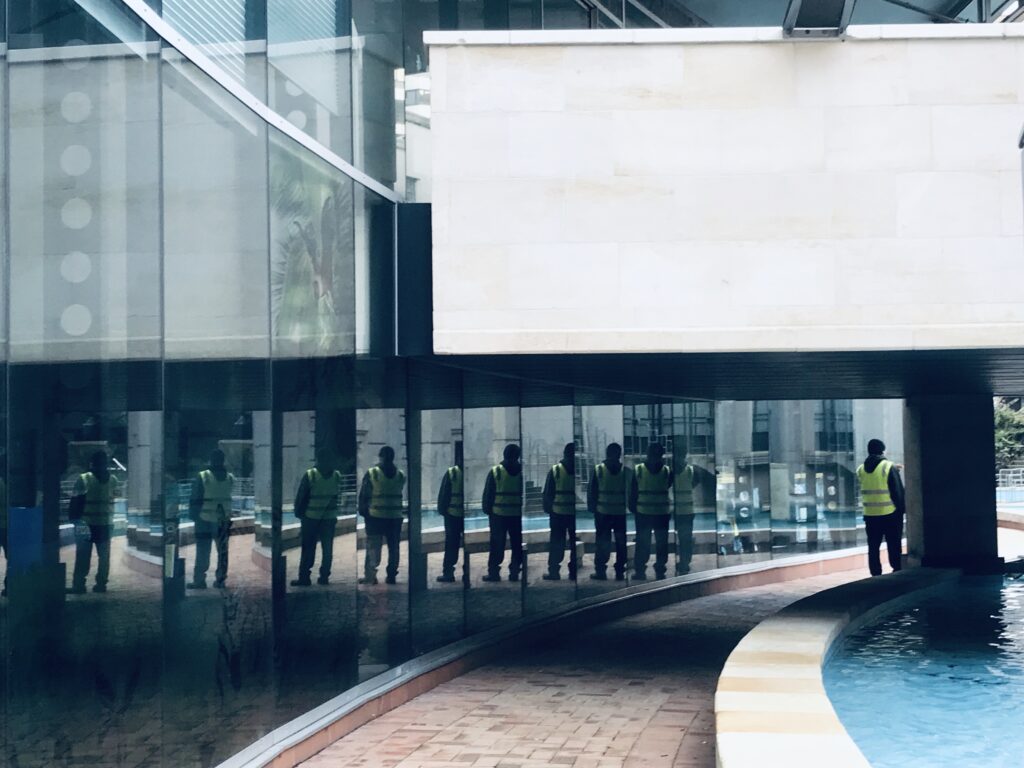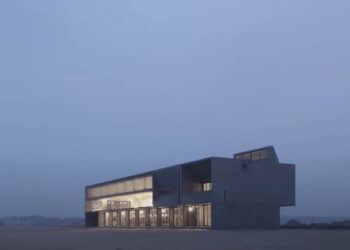My last big business trip pre-Covid was to the ARMS Conference in Australia, which is taking place again this week. No, it’s not a weapons fair. It’s a vibrant and productive gathering of the research management community (which I hope to be back at next year). The 2019 event took place in Adelaide and, as usual, I combined it with a tour of Australian universities. I also — and this is not something a British person gets to say very often — went to New Zealand for the weekend, to visit an old school friend in Wellington. We went for a meandering sightseeing walk around the city and my eye was caught by the reflection of a security guard in a striking building that we passed. A glass panelled facade, curving, playful, reflecting quirky sculptures and water features. And a phalanx of security guards. What could be inside the building, that needed to be so heavily protected from the public? I peered through the windows, and saw … books. Shelves and shelves of books. What is this building? Oh, it’s our public library. So .. why are the public being kept out?

Thereby hangs a tale. This post-modernist building, designed by Sir Ian Athfield, opened in 1991. Five stories, 153,000 sq ft, filled with books, yes, but also artworks. The first library in Australasia to have a cafe. A quarter of a century of solid public service and then, in March 2019, closed, without warning, for an indefinite period. Why? The answer lies 150 miles away in Kaikōura, which was hit by “the most complex earthquake ever studied” in November 2016. Two people lost their lives, hundreds of people were injured, and thousands of buildings were damaged. Wellington Central Library was not initially affected; its sudden closure — announced at lunchtime, closed at 8.30pm — came a couple of years later, when inquiries into the effects of the Kaikōura quake showed that the standards to which “earthquake-proof” buildings had been built needed revision. The library could no longer be deemed safe for use.
What happened next?
The library wasn’t the only building in Wellington to be thus affected. Many buildings — some barely 10 years old — had been built to standards that were no longer valid. This New Zealand Herald article includes a quote from Structural Engineering Society spokesperson Paul Campbell that explains what was learned: “Flexible frames are designed to bend so that the ends of the beams experience controlled damage. But the Kaikōura earthquake has confirmed that if an earthquake is strong enough and long enough, the damage can make the beams grow in length. This means the supports for the pre-cast floor system can move too far apart, potentially causing parts of the floor to lose their support and collapse.” Many buildings in Wellington were demolished, but the city council voted unanimously to find the funds to “fix and upgrade” the library. Quite an achievement given that, only months earlier, the cash-strapped council had been trying to sell off the library and cut its budgets.
For almost two years, the building remained exactly as I saw it on my visit: the Marie Celeste of the library world, books left where readers had put them down, newspapers growing increasingly outdated on the desks, lights still turning themselves on at 8am and off at 5pm. Staff were finally allowed to return and pack up the library’s contents in September 2021, taking 8 weeks to remove the historic fixtures and fittings, many of which had been custom designed for the library. Meanwhile, collections had been continuing to grow, housed in the city’s other libraries, and in whatever other spaces the library could lay its hands on in a city where safe real estate was suddenly in short supply. A consultative process took place to determine how the library would be built, what local people wanted from their library, whether they wanted to increase the budget or the project’s timescale, and so on. Now, construction work to rebuild the library has finally begun, and it will reopen in 2026. Beyond the work to make it structurally safe, there will be other changes that will be familiar to many scholarly librarians – for example, fewer items, shelved on a smaller number of lower shelves, to improve accessibility. New digitization projects are underway to help increase access to the wider collections. It is arguably much more of a challenge to rebuild an existing library than to start again from scratch, as had happened in other New Zealand libraries affected by earthquakes (e.g. Tūranga, the new public library in Christchurch which was built after its predecessor was demolished following the devastating Christchurch earthquake of 2011).
One major change, highly representative of how New Zealand’s society has evolved in the last 30 years, is that the library will be rebranded. I’ve been involved in a lot of library rebranding projects, undertaking consultations about whether the Library should be called the Library, or whether users will be more engaged if we call it the “Information Junction” or the “Knowledge Nexus” or the “Learning Lighthouse”. Wellington’s Central Library will now be known by its the name it was given by the Māori Language Commission in 1991 — “Te Matapihi ki te Ao Nui”, “The Window to the Big World” — or Te Matapihi (the Window) for short. It’s a fitting name for such an iconic glass building, and a lovely metaphor for the role of libraries in our world. I look forward to getting back to Te Matapihi one day, but in the meantime, for any other crane nerds out there, enjoy this timelapse of the crane being installed on the top of Te Matapihi:
Discussion
3 Thoughts on "From a “Ghost Library” to a “Window on the Big World”: The Story of Te Matapihi ki te Ao Nui, Wellington Central Library"
Beautiful article about the constraints this library faces, thanks
Thanks Rachel!
I’m just going back and catching up on my TSKs. I did my dissertation research living on a Fulbright in Wellington in 1992-93 (at the National Archives) but I got a public library card early on and spent many wonderful afternoons there. I hadn’t realized how brand new it was then, but I sure thought it was cool. I first encountered Octavia Butler’s science fiction there (fitting environment!) and I marveled over the cafe, but, I believe, only ate there once. (I was a poor grad student, of course.) Thanks for this marvelous update–must get back there again after 2026!



